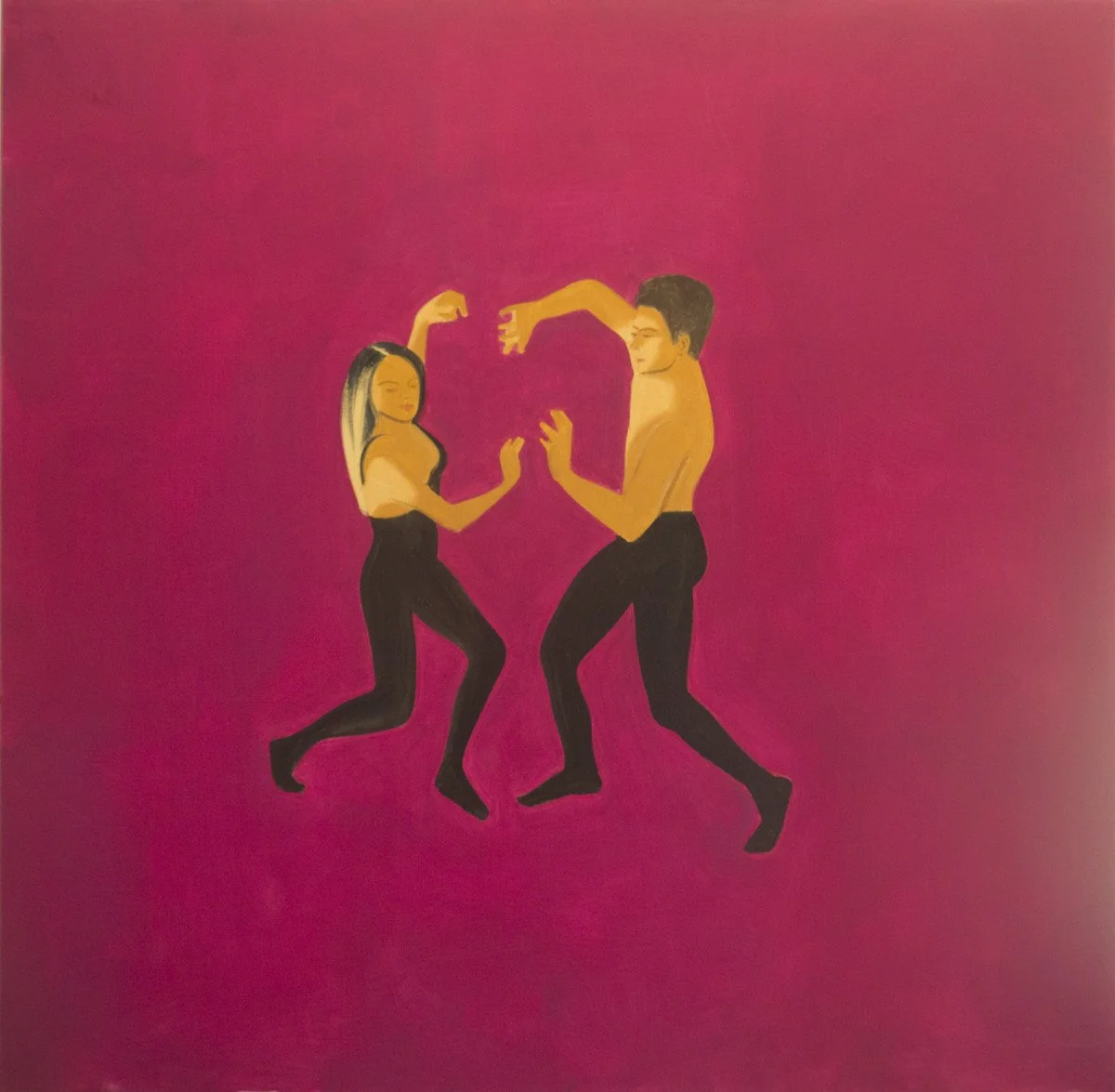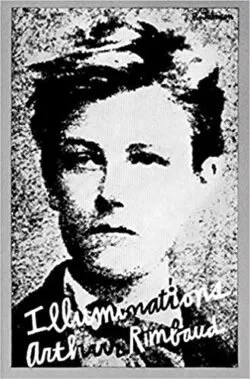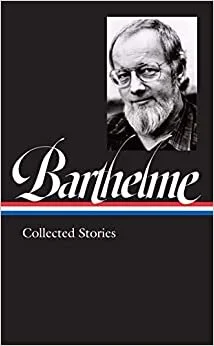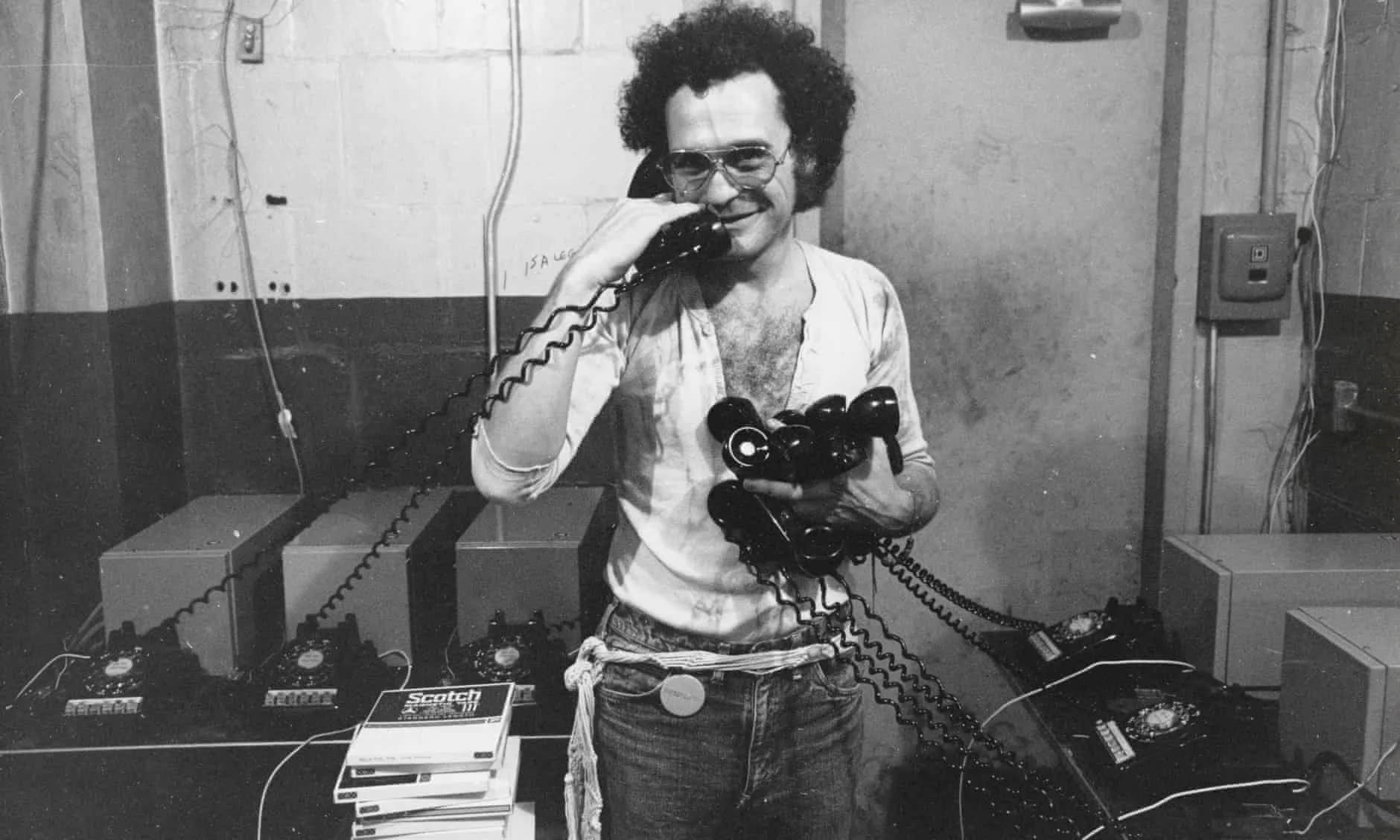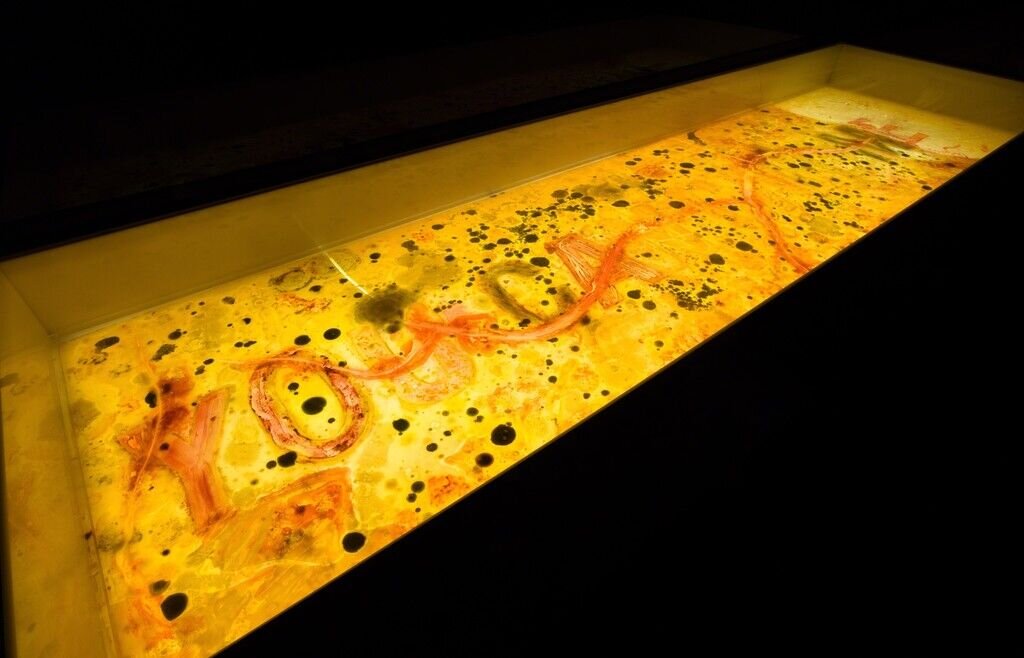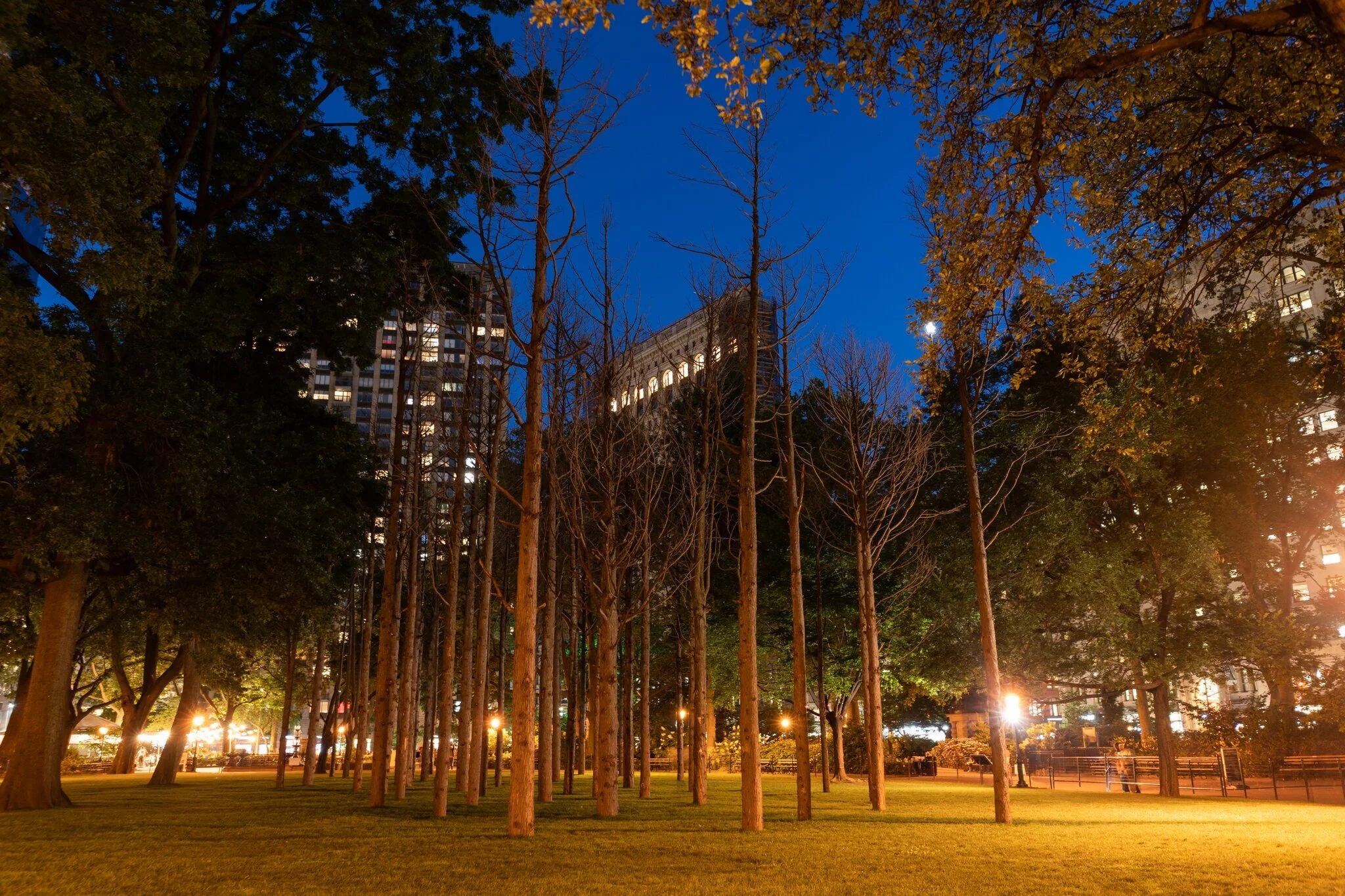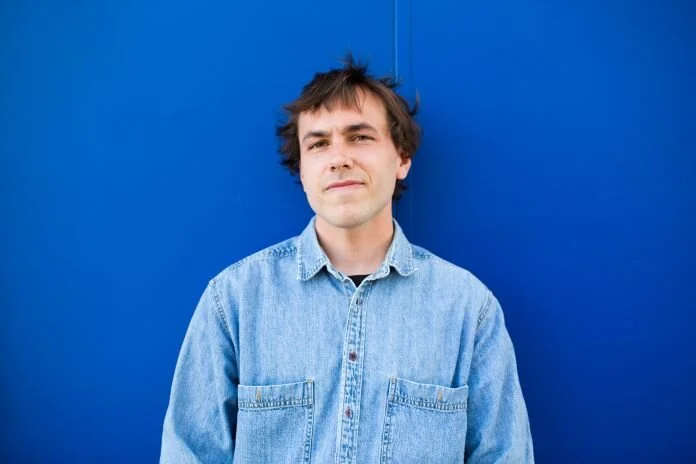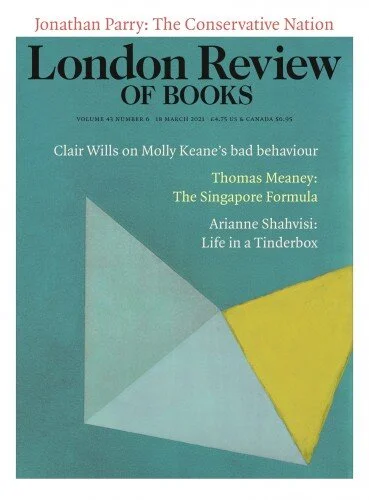Critics called him the most influential poet of his generation. And today? Now that the man is gone, and now that his production can possibly be renewed only by unpublished works that have suddenly come to light and hidden for years, or for decades, in a shoe box, what remains of his lyric? Can we still look at him, in the showcase of the authors of the recent past, as a giant, or is the echo of his written word shrinking? . . .
Read MoreASHBERY SIGHTING: EMMA MCMILLAN AND ALEX KATZ ON THEIR DECADE-LONG DIALOGUE (Cultured Magazine)→
/AK: It was avant-garde, but it wasn’t fresh. Nothing to do with music; it was about fashion. John Ashbery had a lot of music, so we went onto his place and Paul said Beethoven, and I said you’ve got to be kidding. And then I said Brahms, that’s more like it. Then he played this record, [Iannis] Xenakis. He’s this guy who’s an architect, who worked for a producer. . .
Read MoreASHBERY SIGHTING: LIVING IN THE MOMENT WITH ARTHUR RIMBAUD, BOB DYLAN, AND THE PHILADELPHIA FLYERS (Town Topics)→
/Hampton opens Dylan’s Poetics with an epigraph from the poem “To a Reason” in Illuminations — “A drumbeat from your finger releases all sound, and a new harmony begins.” In the chapter featuring Rimbaud, Hampton singles out the “famous axiom, ‘One must be absolutely modern,’ “ before quoting John Ashbery on how Rimbaud’s investment in the present moment involves for him “the acknowledging of the simultaneity of all of life, the condition that nourishes poetry at every second.” . . .
Read MoreASHBERY SIGHTING: THE MAGNIFICENT JUMBLE OF DONALD BARTHELME'S STORIES (TNR)→
/Read MoreFind a copy of John Ashbery’s “Three Poems,” read it, buy a bottle of wine, go home, sit in front of the typewriter, drink the wine, don’t sleep, and produce, by dawn, twelve pages of Ashbery imitation. . . .
ASHBERY SIGHTING: FRANCK ANDRÉ JAMME (TL Mag)→
/There are words that glow like phosphorus when polished. Franck André Jamme polishes words with such sensitivity to subtle changes in their luminosity, that a given sentence varies elusively in nuance, like a jewelled mosaic. He takes us through oneiric depths, through multiple layers and levels of consciousness. If we are willing tobe guided, he gives us access to sacredsanctuaries, close to the hidden core of things — to the divine roots of words themselves. Acclaimed by Edmond Jabès, Henri Michaux, and René Char, and translated by John Ashbery, Jamme published numerous poems andfragments, as well as multiple limited-editionillustrated books. . .
Read MoreHE'S A POET AND THE FBI KNOW IT (The Guardian)→
/In 1968, the poet and visual artist John Giorno was on the telephone when he was hit with an idea. It came to him that “the voice was the poet, the words were the poem, and the telephone was the venue”. He imagined utilising the telephone as a medium of mass communication, in order to generate a new relationship between poet and audience. This would become Dial-a-Poem: one telephone number that anyone could call, 24/7, and listen to a random recorded poem – liberating spoken poetry from what Giorno termed “the sense-deadening lecture hall situation”. As part of New York’s avant garde scene, he quickly enlisted talent, tape-recording the likes of John Ashbery, Bernadette Mayer, Anne Waldman and David Henderson reading poems at 222 Bowery, his loft. He found a project sponsor, 10 answering machines fitted with these recordings were patched together and connected to phone lines and Dial-a-Poem went live. . . .
Read MoreASHBERY SIGHTING: WHEN PAINTERS ARE OLD THEY DO THEIR WORST PAINTING (The Art Newspaper)→
/. . . Later, you knew the poet John Ashbery.
I met him around 1961 to 1962. I was quite friendly with him. That’s why he did the preface for my first show in London, at the Hanover Gallery. He played an important role in my life. He thought that I should develop a literary form of painting, properly literary—that I should immerse myself in the literature of Raymond Roussel, of which he was a great fan. He thought that there was potentially in my painting a slant towards literature, a similar sophistication and hermeticism to Roussel. . . .
Read MoreASHBERY SIGHTING: 5 WORKS TO KNOW BY ANICKA YI (ARTnews)
/. . . But the most talked-about work of the exhibition was Grabbing at Newer Vegetables (2015), the result of a project for which Yi asked 100 of her female friends, many of whom had ties to the art world, to swab a body part of their choosing. (Its name is a reference to “Boundary Issues,” a 2009 poem by John Ashbery.) . . .
Read MoreTHE ART OF POSTHUMOUS PUBLICATION: EMILY SKILLINGS ON JOHN ASHBERY ( International Anthony Burgess Foundation)
/A wonderful conversation with Emily Skillings on her editing of Ashbery’s posthumous collection, Parallel Movement of the Hands: Five Unfinished Longer Works by John Ashbery, by the International Anthony Burgess Foundation in July 2021.. .
Read MoreASHBERY SIGHTING: THE SWEET WAY JULIA CHILD CORRECTED THIS RECIPE MISTAKE (Mashed)→
/Poetry, in and of itself (as opposed to, say, as a basis for song lyrics), might not currently be among the most popular of American art forms (via Penn State News). However, it has always been relevant in American society, and for those who appreciate it, the name John Ashbery (1927-2017) likely rings a bell. Ashbery is frequently recognized as one of the country's finest 20th century poets, according to the Poetry Foundation, which noted that Ashbery was New York State's poet laureate from 2001 to 2003, the chancellor of the Academy of American Poets, and the winner of "nearly every major American award for poetry, including the Pulitzer Prize." Today, fans of Ashbery — not to mention poetry in general — are enjoying a throwback to a simpler time, when poetry and cooking were far more evenly matched in terms of their star-making power. . .
Read More“STILL HUNGRY?”: ON JOHN ASHBERY'S “PARALLEL MOVEMENT OF THE HANDS" (LA Review of Books)→
/Despite their varying degrees of unfinishedness, the poems in Parallel Movement of the Hands still chirp with the familiar music of Ashbery’s many-textured lyricism, rippling with the same-old “signature patterns that lend his language a living, off-kilter quality,” as Skillings writes in her introduction, a quality which has always resisted being nailed down, though it invites a cool stream of attempts. “Ashbery poems are like involved daydreams from which, as with real dreams, there is no obvious exit,” suggests Rae Armantrout in her tribute to the late poet in The New York Times. “[Ashbery’s] is a fully human poetry,” offers Oli Hazzard, “in which, as it is with us, the marginal is thrust constantly and unexpectedly into the centre of things.” Indeed, as Ashbery writes in “The History of Photography,” “you are never sure of arriving, / or making any progress” in these poems, as “one vignette sheds another, cancels its own credibility / in a fever of slight adjustments,” a constant “froth of activity,” “confusion and unfinished / business,” until you find yourself, somehow, in another place entirely, like the man “battling blizzards to a place he thinks / is the North Pole, but is in reality hundreds / of miles from there.” . . .
Read MoreASHBERY SIGHTING: IN MAYA LIN'S 'GHOST FOREST,' THE TREES ARE TALKING BACK (NY Times)→
/But what’s most moving — and, for that reason, most politically effective — about “Ghost Forest,” is the way it personalizes its subject. Without sentimentalizing or metaphorizing, it presents trees as the living, breathing, dying relatable beings and karmic companions they are, ones I observe, with love, from my Bronx window, and ones that John Ashbery celebrates in these lines from one of his early poems, “Some Trees” . . .
Read MoreASHBERY SIGHTING: BEER WITH A PAINTER: CLARE GRILL (from Hyperallergic)→
/The poet and art critic John Ashbery wrote, in relation to painting, “most good things are tentative, or should be if they aren’t.” I think of this idea when I experience Clare Grill’s abstract paintings. I live with a 12 by 10-inch painting by Grill in my bedroom: “Horseshoe,” 2016. The colors range from deep pink to burgundy, and the forms, as the title suggests, all take off from a horseshoe shape, stretching into arcs and crescent moons across the surface, pulled by gravity into uneasy ovals. . .
Read MoreASHBERY SIGHTING: SOON THERE WAS NOTHING LEFT (Poetry Foundation online)→
/Perhaps more than any other poet of the postwar period and beyond, John Ashbery gave voice to rumination’s off-handed, recursive, ever expansive circuits. Beginning in his early volumes Some Trees (1956), The Tennis Court Oath (1962), and The Double Dream of Spring (1970), he tested the conventional limits of how a poem might start. He often began in medias res with . . .
Read MoreASHBERY SIGHTING: 'HER MAN': A RELIC OF A BYGONE ERA, NOW RESTORED (from The New York Times)→
/Twelvetrees, who committed suicide in 1958, was best known for starring in lachrymose melodramas. She’s spunkier here, caught between her shiv-wielding “protector” Johnnie (Ricardo Cortez, né Jacob Krantz) and a Sir Galahad figure, the sweet-singing American sailor Dan (Phillips Holmes, described in Ashbery’s poem as “awkwardly handsome”). “You’re just a dame and a pretty regular little dame at that,” Dan tells her on a date that winds up at a mission on St. Patrick’s Day. . .
Read MoreASHBERY SIGHTING: 2nd GRADE SHARE RERECORDED VERION OF "FAVORITE SONG" (from Under the Radar)→
/It’s proof of the John Ashbery quote about how proper nouns are the most descriptive words in the English language. . .
Read MoreASHBERY SIGHTING: PUZZLES AND PROMISES (Art in America)→
/Navigating that world of craftsmen has often been a challenge for her, partly because of the gender dynamics involved—she’s sometimes the only woman present in the workshop, and also the one giving the orders—and partly because she typically begins without a clear intention: “I would not want to be the kind of artist who knows exactly she wants.” Córdova aims to put herself in the way of happenstance. She explains this through an anecdote about John Ashbery, who said that his poems often originated in a stray phrase overheard in public. Without knowing the context of the words, he’d write them down and later use them to trigger his own compositional process. Córdova enters the space of a craft or trade in just this spirit, opening herself to its creative possibilities, then waiting to be set off in some direction or other. . .
Read MoreASHBERY SIGHTING: ON "GETTING" POETRY (THE NEW CRITERION)→
/. . . Conversely, even a “difficult” poet is more accessible to the common reader than a serialist composer is to the common concertgoer. John Ashbery, who died in 2017 at the age of ninety, was by general consensus the greatest American poet of the late-twentieth century; his work often makes no sense, but it is still quite likeable. . .
Read MoreJOHN ASHBERY'S MUSIC LIBRARY: A PLAYLIST (EVERGREEN REVIEW)→
/Listening was Ashbery’s primary activity, but he shaped and strengthened this listening through reading about composers and pieces. With his near-photographic memory, each record’s liner notes—an extremely high-quality, and now lost, art of writing about music by musicologists and composers—placed at his fingertips an enormous number of facts about each piece, which he dropped seamlessly into notes that were otherwise primarily descriptive and appreciative. . .
Read MoreASHBERY SIGHTING: BYE-BEY, NY—HARRY MATHEWS' POETRY (LONDON REVIEW OF BOOKS)→
/Paris was where Mathews met John Ashbery, then a Fulbright Scholar. It was 1956. Ashbery introduced him to the work of the eccentric procedural writer Raymond Roussel, which reignited Mathews’s literary imagination. In 1959 he came into some money and used it to found a little magazine named after one of Roussel’s works, Locus Solus: Ashbery, Kenneth Koch and James Schuyler were collaborators. . .
Read More

!["CERTI ALBIERI" ["SOME TREES"] ( La Repubblica)](https://images.squarespace-cdn.com/content/v1/5be5a81e3917ee31c912fad8/1635344754957-0U9RRANE8NC4CZ1UUT81/trees.jpeg)
